Abstract
Evaluation of sinus node function was performed in 5 patients with an intact cardiac autonomic nervous system (group I), and in 8 patients with a transplantated, denervated heart (group 2). After baseline data were recorded, the electrophysiological studies were repeated in all group I patients and in 6 of the 8 group 2 patients, 45 to 60 minutes after the administration of digoxin 1.25 mg intravenously. Baseline cycle length, sinus node recovery time, and sinoatrial conduction time were significantly shorter in the transplanted heart than in those with intact autonomic innervation, but correction of the sinus node recovery time and sinoatrial conduction time for heart rate abolished these differences. Digoxin produced a small increase in cycle length, sinus node recovery time, and sinoatrial conduction time which did not reach statistical significance in this small study group of patients with innervated hearts. In the denervated, transplanted patients, no change in cycle length occurred after digoxin in any patient. The sinus node recovery time was unaffected by glycoside administration in 3 of 6 patients, while the sinoatrial conduction time was unchanged in 4 of 6. In one group 2 patient, digoxin produced first degree sinoatrial node exit block, and in a second patient, 2:1 sinoatrial nodal exit block developed. The mechanisms responsible for these effects in the denervated heart are not clear.
Full text
PDF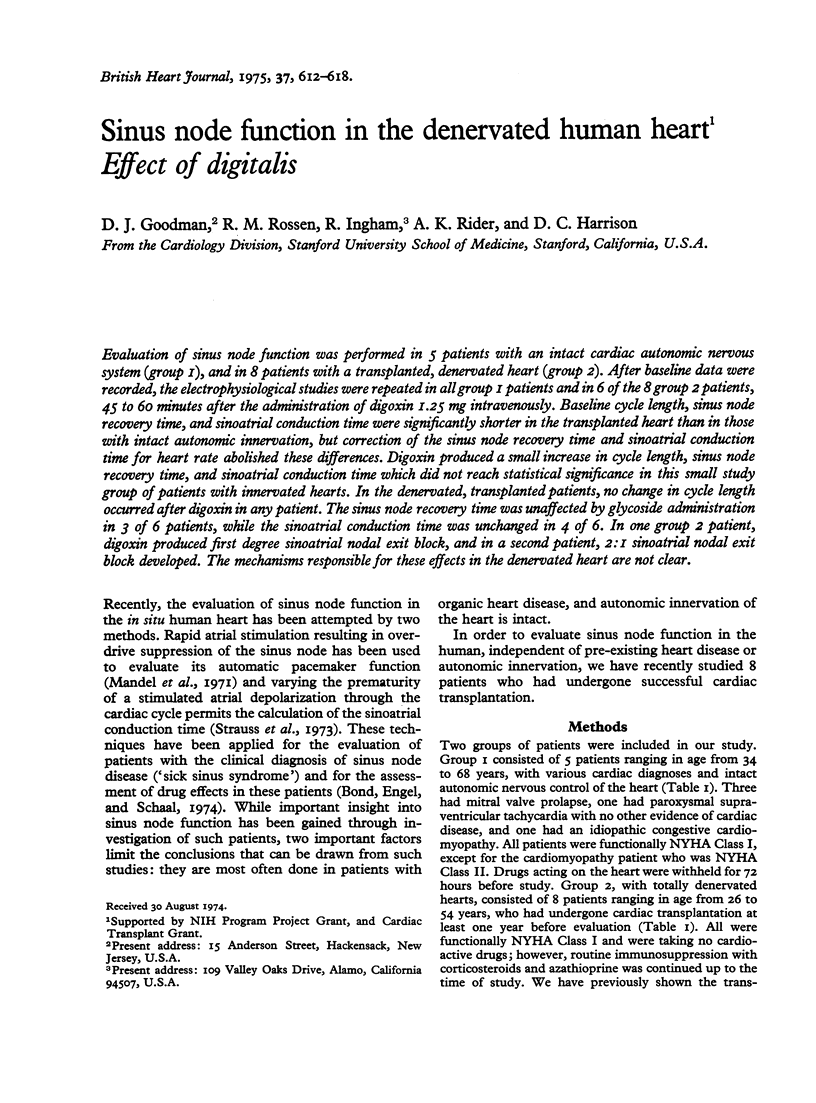
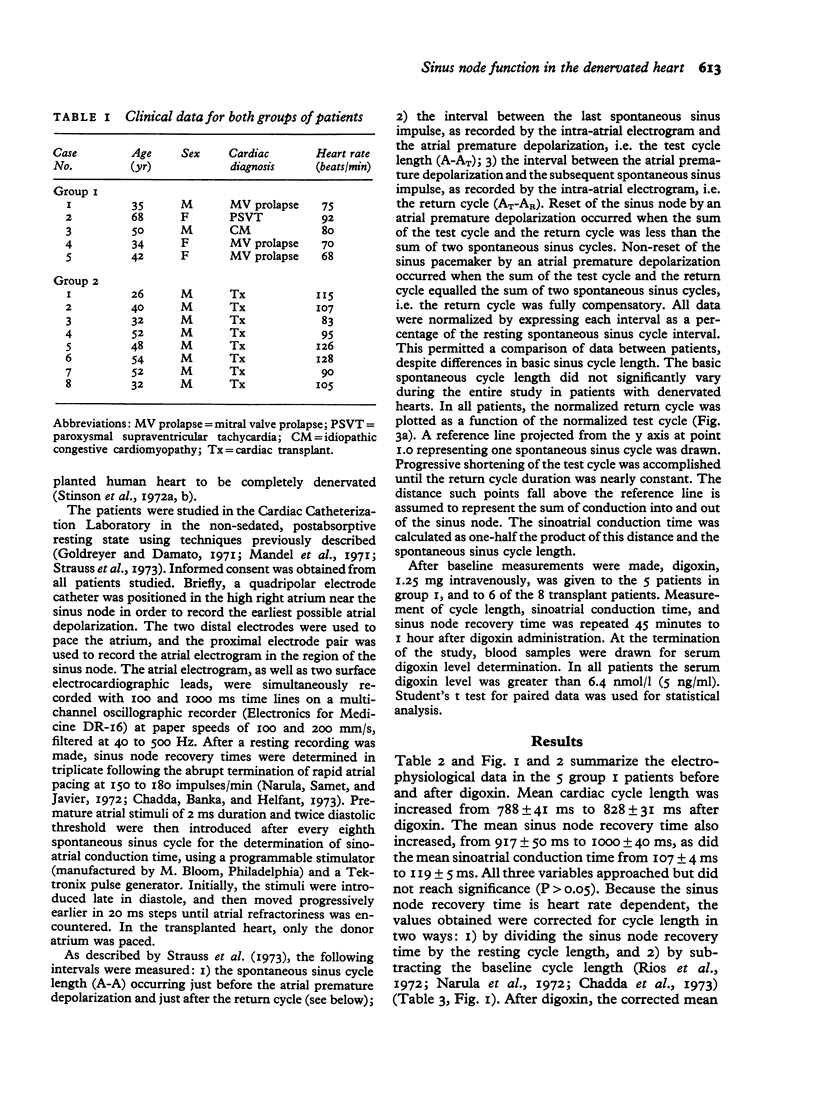
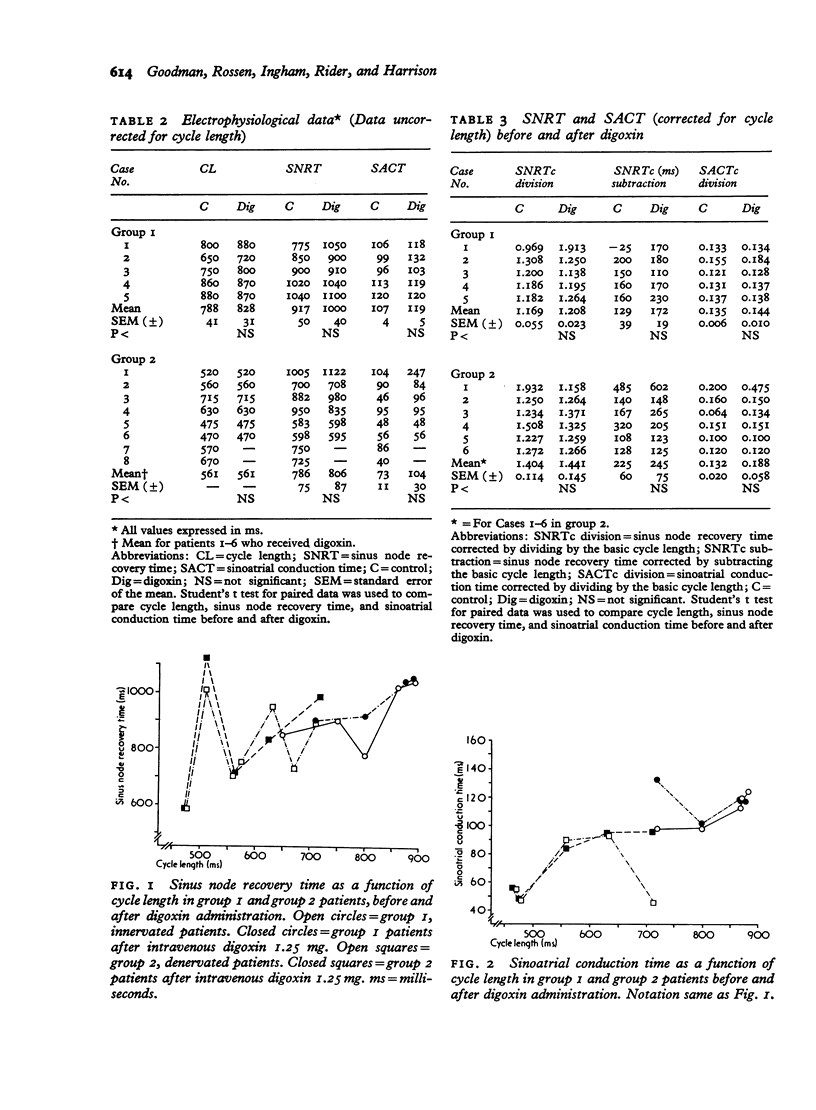
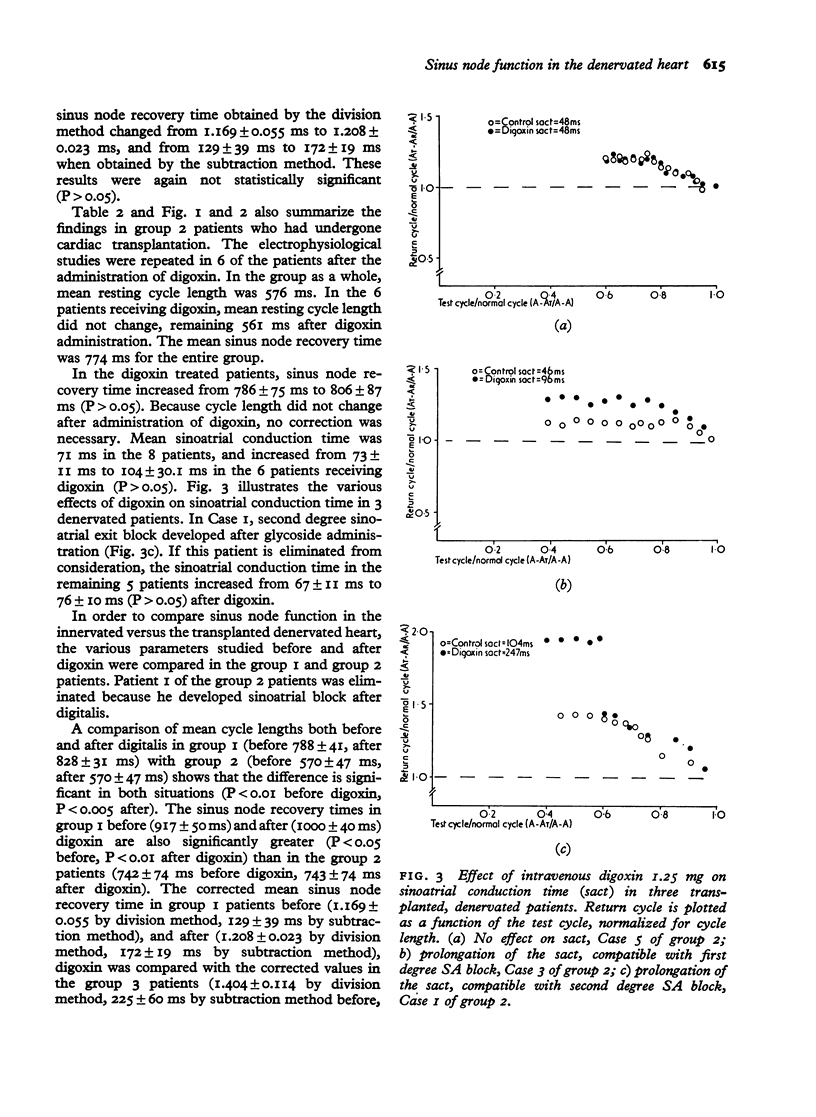
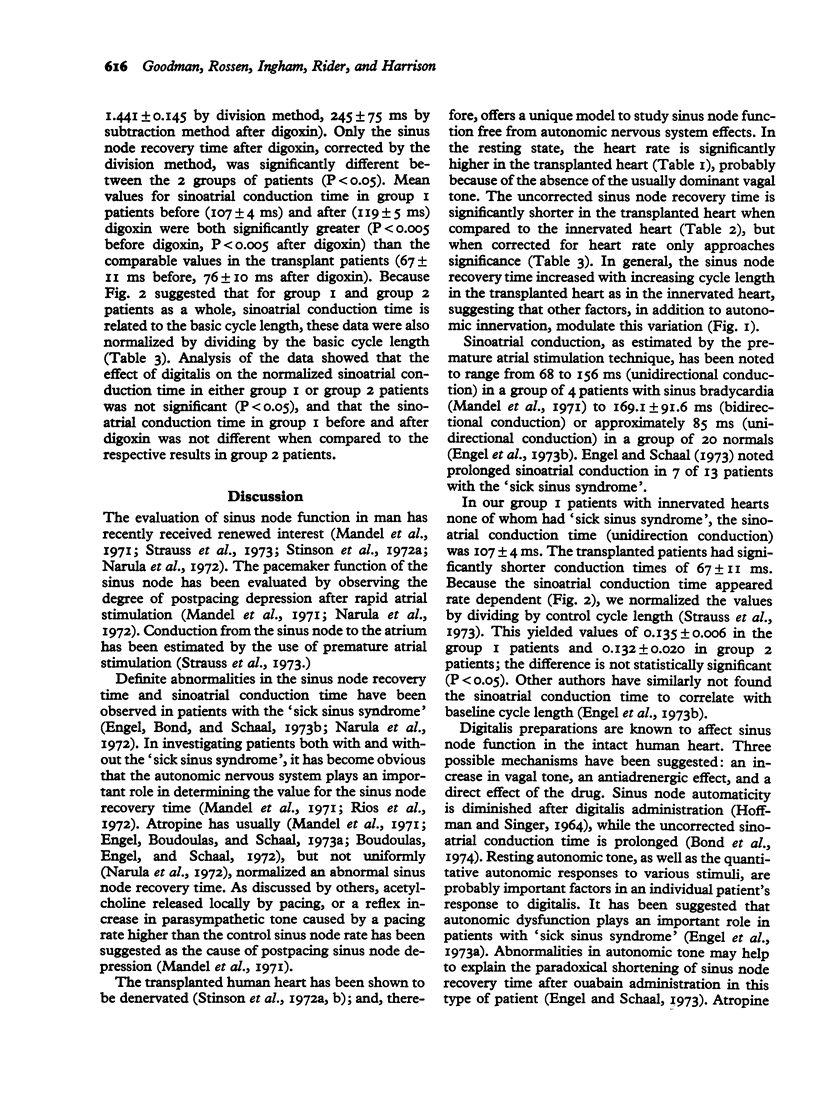
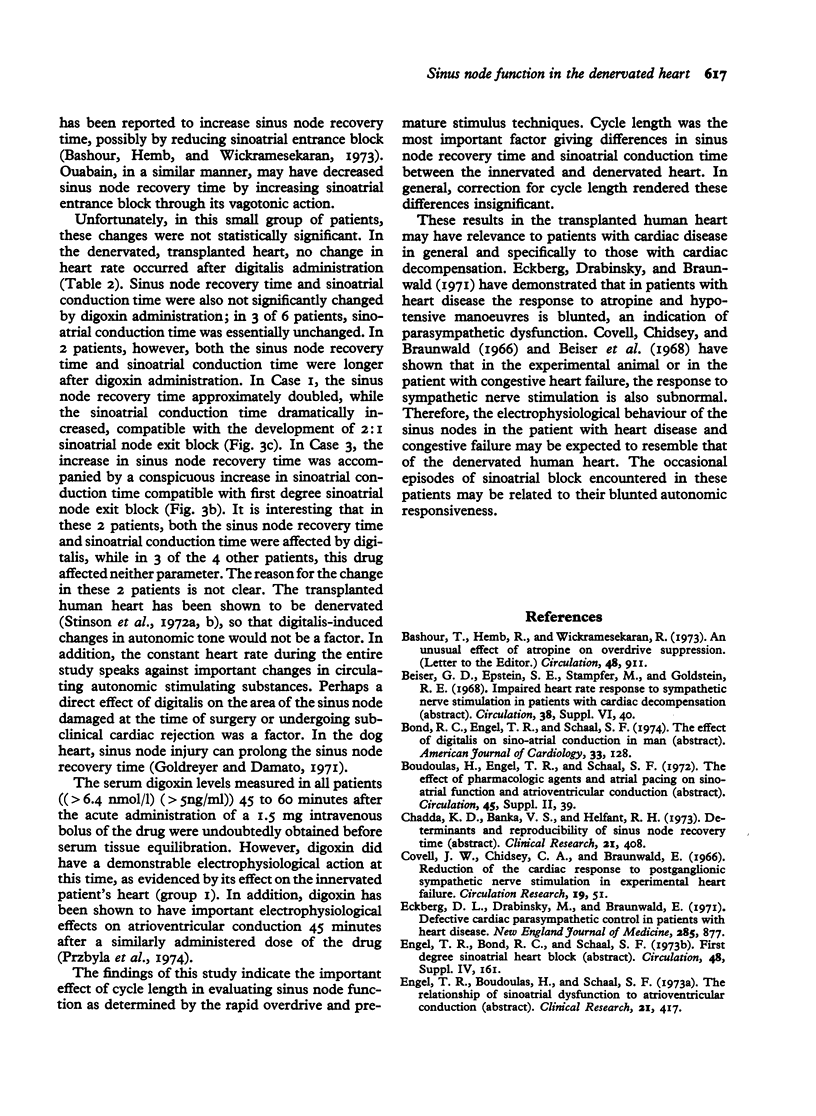
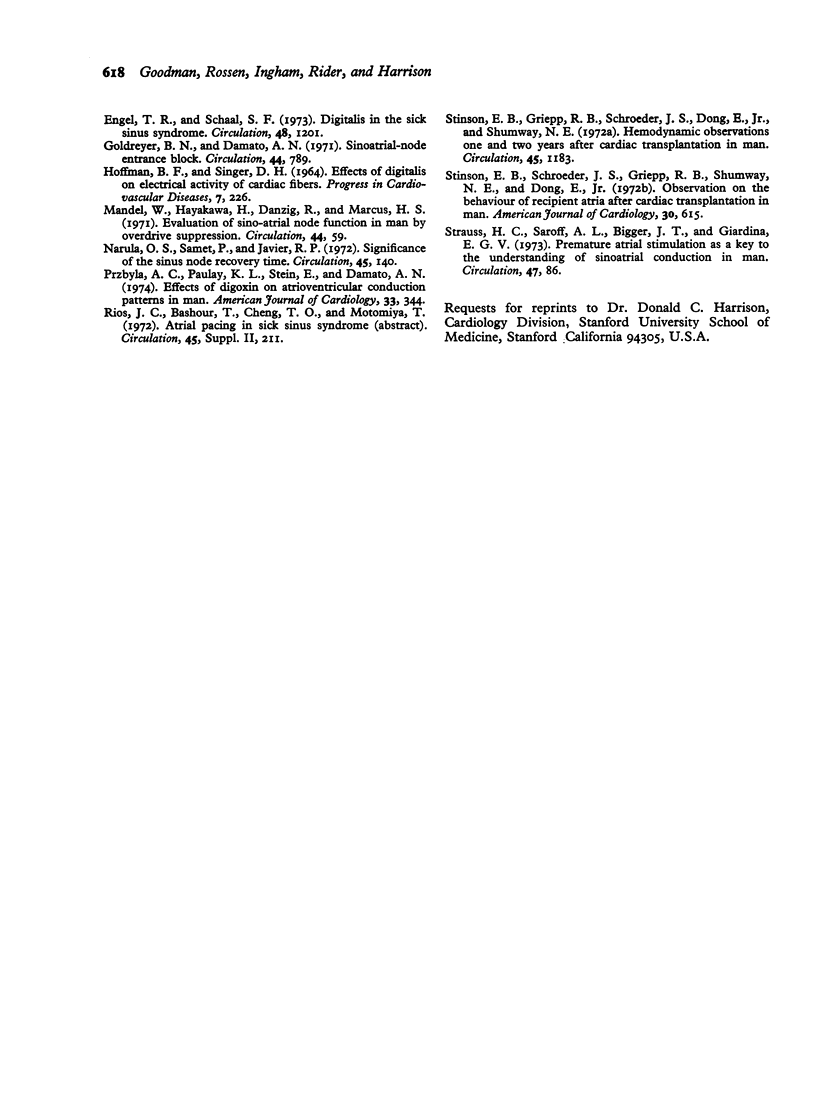
Selected References
These references are in PubMed. This may not be the complete list of references from this article.
- Eckberg D. L., Drabinsky M., Braunwald E. Defective cardiac parasympathetic control in patients with heart disease. N Engl J Med. 1971 Oct 14;285(16):877–883. doi: 10.1056/NEJM197110142851602. [DOI] [PubMed] [Google Scholar]
- Goldreyer B. N., Damato A. N. Sinoatrial-node entrance block. Circulation. 1971 Nov;44(5):789–802. doi: 10.1161/01.cir.44.5.789. [DOI] [PubMed] [Google Scholar]
- Mandel W., Hayakawa H., Danzig R., Marcus H. S. Evaluation of sino-atrial node function in man by overdrive suppression. Circulation. 1971 Jul;44(1):59–66. doi: 10.1161/01.cir.44.1.59. [DOI] [PubMed] [Google Scholar]
- Narula O. S., Samet P., Javier R. P. Significance of the sinus-node recovery time. Circulation. 1972 Jan;45(1):140–158. doi: 10.1161/01.cir.45.1.140. [DOI] [PubMed] [Google Scholar]
- Przybyla A. C., Paulay K. L., Stein E., Damato A. N. Effects of digoxin on atrioventricular conduction patterns in man. Am J Cardiol. 1974 Mar;33(3):344–350. doi: 10.1016/0002-9149(74)90314-2. [DOI] [PubMed] [Google Scholar]
- Stinson E. B., Griepp R. B., Schroeder J. S., Dong E., Jr, Shumway N. E. Hemodynamic observations one and two years after cardiac transplantation in man. Circulation. 1972 Jun;45(6):1183–1194. doi: 10.1161/01.cir.45.6.1183. [DOI] [PubMed] [Google Scholar]
- Strauss H. C., Saroff A. L., Bigger J. T., Jr, Giardina E. G. Premature atrial stimulation as a key to the understanding of sinoatrial conduction in man. Presentation of data and critical review of the literature. Circulation. 1973 Jan;47(1):86–93. doi: 10.1161/01.cir.47.1.86. [DOI] [PubMed] [Google Scholar]


